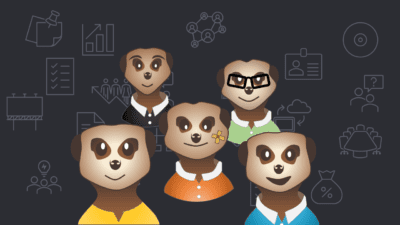Requirements to build a community
First you need to make the core decision, will the community be a part of my primary tenant or will I set up a new tenant. For a business related community you can use your primary tenant, all guests will be added to your businesses guest-list and can be found by your employees.
Creating a new tenant for your community is a great way of separating it from the business data.
Even though you could do this with Teams for Free, I would recommend you to use a licensed version. You can manage with a Business Basic license for ~60€ a year. This license will give you one user and a tenant to work in, for each additional user that can control the environment you have to pay for additional licenses.
A small note about limits in Azure Active Directory
Microsoft used to have a limit on 5 guest per paid license. This has changed, now you can have 50 000 Monthly Active Users per tenant. More than that and you pay a very low cost for each additional.
Creating a team and channels
With your tenant and licenses fixed, create your team. You can follow this Step by step guide if needed.
With the team up we need to structure the channels. Think of each channel as a room for debate, some recommended channels and purpose (description).
- General – This is the main channel, the first people check out, so limit write access to this channel. This channel is used for important information (and announcements) and only owners should be able to post here.
Note: Guests can’t be team owners, if guests are moderators you need an Announcement-channel. - Announcements – A channel for moderators and owners to post important information (use when guests are moderators).
- Introduction – A place for everyone to introduce themselves, getting to know each other is an important part of the community.
- Moderators – A private channel for moderators to communicate.
Then you have the channels for topics, these are depending on the main topics of your community. Create at least a few to start with, but make sure to have a plan on how to keep these active. A suggestion is that each channel has a moderator/expert.
How to limit @mentions and other settings
Right click the team and choose 
- Add a team picture for internal use, at present this picture isn’t shown to guests. If you don’t have one, create one from this template.
- I recommend that you limit @team mentions, this should only be used by the team owners. @channel can be useful as unless it gets misused.
- Set a plan for @tags mentions, this is the best use of mentions except @user mentions.
- Guests already have limits, but check the Member permissions if you want to impose the same limit for people within your tenant.
Channel moderation
Some channels need to moderation and restrict who can post in them. Right click the channel and choose ⚙ Administer channel.
- General – This is limited to only owners and .
- Standard channels – Here you can set moderation on and add moderators, you can also limit users possibility to reply or pin messages.
- Private channels – Use of moderators to have their own private space.
Introduction and information to your community
Every channel should have a post with an introduction to the channel and its moderators (if used). Use the Announcements feature of posts and design a custom background image using this template.
Note: At the time of writing the “New Teams” experience don’t allow custom backgrounds.
If you feel like it, create a video to introduce the community, it’s leaders, purpose and more and put it at the top of the General Channel.
When you are done pin each post, they can always be located within the ℹ button at the top right of every channel.
Invite or sign up
Now it’s time to get people to sign up, there are many ways to solve it, but to make it easy just use Microsoft Forms. Set it so you get a notification for each new reply and if you are handling European users, remember to add a field for GDPR Consent.
How to solve it; use a multiple choice question with only one option “I approve” and make it mandetory.
Automatically greet your people using Power Automate
Did you know you can use Power Automate to automatically send a greeting to anyone who joins your community? I wrote an article about that!
Use Graph API to automate onboarding
I never tested this myself unfortunately, But I found a guide in Microsoft Tech Community. Note, Teams is a part of Microsoft 365 groups, same as SharePoint team sites are.
Analyse the performance
Right click the team and choose 
Choose Analyse and you can see the activites for the team and individual channels. Use this tool as a way of checking if your team is healthy and thriving.
There are many more aspects to cover, but if you have some questions or feedback, please make a comment on this article and I’ll improve and explain.
Teams Community, final thoughts
Teams is a great tool to make a community where the information isn’t shared with advertisers. It’s a multifunction tool where file sharing and collaboration is a core feature. It is great for professional communities where people are used to working in Microsoft Teams.
Engage with your community regularly, seek feedback, and continue to refine and enhance the Teams experience for your members.
